The guayabera shirt: A report from our man in Mexico
By Manish Puri
If the average PS reader is anything like me (and after nearly a decade of reading I’ve no reason to believe they’re not) then the standard holiday wish list might read something like: good food, a nice drink, a museum visit, a friendly chat with some locals (which often follows the nice drink) and a nose around the menswear stores.
Which is why, during my recent travels around Mexico, in between drinking in culture and drinking in Mezcal, I was hoping to look at and, baggage allowance-permitting, acquire a guayabera.
The guayabera is a men’s summer shirt to be worn outside the trousers and the clásico style - as worn by Ernest Hemingway and Gary Cooper (top) and a market trader in Izamal (above) - is traditionally finished with:
- Four patch pockets
- Five sets of vertical pleats called alforzas – two running the length of the centre of the left and right front panels of the shirt and three running down the back.
- Buttons on each of the four pockets and at the top and bottom of each set of pleats.
- A western yoke across the back of the shoulders which, coupled with the three sets of alforzas, resembles the Cuban flag (more on that later).
- A straight hem with button vented sides.
- Most commonly made in white algodón (cotton) or lino (linen), which is the more expensive option.
Whilst cheaper guayaberas might have pre-pleated strips sewn to the shirt panels, the best will have the pleats carefully folded directly into the fabric. These pleats are a beautiful adornment to the shirts and showcase the skills of the makers, but they also allow the shirt to flex accordion-like as the wearer goes about their daily tasks.
Of course, in keeping with so much of the classic clothing covered on Permanent Style, this traditional design isn’t the destination, merely the starting point.
Today you’ll find a multitude of variants in the guayaberias across Mexico: no pleats, wide or fully pleated fronts (the Presidencial style below), every colour under the sun, vented and unvented sides, two pockets, jetted pockets, no pockets…the list goes on.
I also found shirts made from henequen (sisal) - a fibre derived from the agave plant. Mayan culture has a long tradition of using sisal (also known as green gold in these parts), its natural strength making it ideal for producing ropes, nets, rugs and hammocks.
The sisal shirts were soft and creamy (their natural undyed colour) and had a thick, crepe-like handle.
Most styles of guayaberas have a standard shirt collar but banded-collar shirts called Filipinas (more on that later as well) are also popular - as worn below by a young man (and the immaculate chap in the background) I saw at the weekly Serenata de Santa Lucia music event in Mérida.
Guayaberas come in both short sleeves and long sleeves, which gives them something of a split personality.
The former is for daily use, both socially and professionally for waiters, hotel staff, big band musicians and so on. This is one of the reasons why even the finest shops will stock poly-cotton blends – there is a large demand for inexpensive and durable makes.
The latter is considered appropriate for the most formal of occasions.
Indeed, in parts of Mexico the long-sleeve guayabera is worn by businessmen and politicians - former president Luis Echeverría was an avid proponent (above with Queen Elizabeth II in 1975, sporting a guayabera with French cuffs).
It’s also typically worn by men at weddings - made from the best fabrics and replete with intricate and colourful embroidered panels.
For me, nothing symbolised the guayabera’s formalwear status more than this amusingly familiar icon of ironic non-conformance - a guayabera printed on a t-shirt.
From what I could tell, the only design component that was a constant across all models was the straight hem - curved hems are only found on the shirts made for the growing women’s market.
I won’t go into detail on the history of the guayabera - I don’t purport to be an expert or anything other than an enamoured outsider.
However, there are numerous theories on its origins. Is it a distant relation of the Filipino Barong Tagalog? Was it originally a Cuban workwear shirt designed to carry guayabas (guavas) and brought to Mexico by the wealthy Yucatecans who shopped in Havana’s glamorous El Encanto department store? Was it named after yayaberos - the name given to people that lived by the Yayabo river in Cuba (and where there is now a guayabera museum).
The truth, like the alforzas, is difficult to unpick.
The first part of my travels took me through Mexico City, Puebla and Oaxaca de Juarez, where I saw very few guayaberas in the wild until we stumbled across a magnificent Oaxacan wedding party in the square outside the Templo de Santo Domingo de Guzmán.
Most of the male guests were wearing crisp, white guayaberas and black trousers; as was the groom, whose shirt was finished with yellow embroidered panels to harmonise with the stunning yellow and white traditional dress worn by his bride.
Despite this sighting, my research suggested that, while I would certainly find guayaberas in these cities, they wouldn’t necessarily be the best places on my trip to find them. Most of the shops I visited were camiserias - shirt shops that stocked guayaberas as part of their wider range. I also found a lot of the shirts were made of poly-cotton or cotton and struggled to find any in linen.
However, I did take some encouragement from these visits: most of the better quality guayaberas had labels stitched into them that said “heche en Mérida” (made in Mérida).
Mérida is the state capital of Yucátan and I was flying there after Oaxaca de Juarez. I’d been told that I would have little difficulty finding high quality guayaberas in the city and throughout Yucátan - the state having become a centre of production after the end of the Cuban revolution made it harder to procure shirts from Havana. Indeed, in Mexico the guayabera is also known as the camisa de Yucatán (Yucatán shirt).
The scent of guayaberas thickened in my nostrils upon landing at Mérida International Airport. I noticed that a few men (young and old) were wearing them. Whilst waiting for our backpacks to be unloaded from the plane I dashed off for a comfort break and my heart cheered when I saw the pictogram for the men’s toilet was also wearing a little guayabera. The game was afoot.
Once in town, guayabera stores were liberally dotted around Mérida’s Centro district - Calle 59 and 62 in particular. In keeping with shopping in the central zone of any tourist-friendly city, one has to be careful of buying not-so-good garments masquerading as good (I was specifically warned about poly-cotton blends that are woven like linen and sold at the equivalent price), or buying good garments at inflated prices.
For a solid range of classic guayaberas in a variety of colours and cloths (including Italian and Irish linen) I liked Guayaberas Jack - prices from MX$500 to MX$2000 ($25 to $100) and they ship to the UK and US.
A lot of their stock is made on-site in a small workshop at the back of store, so when I enquired about the availability of a short-sleeve version of a long-sleeve shirt that I took a shine to, General Manager Billy pointed at four machinists taking a coffee break and said they could make the long sleeve into a short sleeve in 10 minutes.
However, of all the shops I visited the one that stood apart was Katab Guayaberas, a small boutique owned by Alberto Rello (below left) and managed by Maru Bautista (right) – prices from MX$1000 to MX$3000.
Alberto has been selling guayaberas for over 20 years and I spent a couple of hours with him and Maru discussing the brand; Maru performed sterling translation work and any gaps were filled with my Duolingo Spanish, hand gestures and Google translate.
Katab carry two labels. The first is La Plaza del Recreo which is their casual line, with most shirts made from cotton and poly-cotton and designs that lean towards the simpler, more informal end of the spectrum.
I loved the classic Cubano model (below) and since my visit I’ve been messaging Alberto and Maru about having a short-sleeve version made up in a mustard linen.
However, it was the eponymous Katab label that drew my eye. This is Alberto’s premium line with shirts made in Italian linen and linen-cotton blends and finished with polished mother of pearl buttons.
These guayaberas are for more formal occasions such as parties and weddings, so the details on some of them might be a little showy for readers – contrast collars and plackets, for example – but these can be changed with made to order purchases.
It’s worth noting here that these types of flourishes aren’t unique to Katab: a lot of the guayaberas I saw in Mexico were aimed at younger people that are keen to wear these shirts but are equally keen to avoid looking like an elderly relative. Alberto said most of his customers are 35 to 55 years old, but the 20 to 30 year old base is growing.
As these shirts are for special occasions they are finished with stunning hand embroidered designs, which are all the creation of Alberto and take their inspiration from pre-Hispanic culture and architecture – the pattern above, for example, represents an aerial view of the pyramid temple to the serpent deity of Kukulcán at Chichén Itzá.
It was this mix of a classic menswear garment, traditional handwork techniques and design rooted in local culture and mythology that really captured me.
Katab’s shirts are made in Mérida, and they are one of a handful of makers whose guayaberas are certified as Así es la guayabera. This is an initiative of the National Chamber of the Garment Industry to protect and promote the Yucatecan guayabera, partly in response to the impact on local makers from the influx of cheaper, Chinese shirts into the US.
Any shirt bearing this certificate has been manufactured by a legally constituted company, meets certain traditional design standards and is completely made from quality materials in the Yucatán.
Once the unembroidered shirts are ready, Alberto drives them, along with his designs, to various small towns and villages an hour or two south of Mérida – Teabo, Maní and Tekax. There he delivers them to local artisans who are skilled in katab (the Mayan word for cross stitch).
The art of cross stitch was extremely popular in Europe in the 19th century and subsequently became one of the most prominent forms of needlework in Mexico.
The shirt above was decorated with eleven stunning hummingbirds which are believed to carry good thoughts between people, and have come to symbolise love and the remembrance of loved ones. I was told it would take around five to six days work to embroider a shirt like this.
Below you can see the reverse of a shirt and the neatness of the pleats and the precision of the cross stitch.
Alberto was rightly proud of his role in bringing work to the small towns and villages, and is eager to foster a connection between his customers and the artisans. Each shirt has a tag with the name of the woman that stitched the design.
It is still predominantly women that do this work - Alberto said that on occasion when he knows a man has done the needlework the tag is still returned with a woman’s name on it out of embarrassment. Ultimately, Alberto wants to incorporate a unique QR code in each shirt that allows the customer to learn more about their specific embroiderer.
I hope he’s successful with his ambition as it would help elevate these artisans and perhaps inspire future generations. Alberto’s rueful closing comments echoed conversations I’ve had with tailors in Europe: the generational transfer of these skills is tapering off. I nodded in agreement, “it’s incredibly hard work demanding skill, persistence and experience” I suggested. Alberto was quick to add a final essential quality: passion.


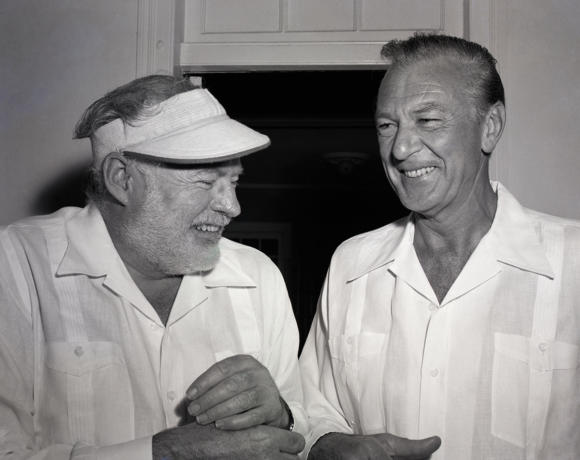
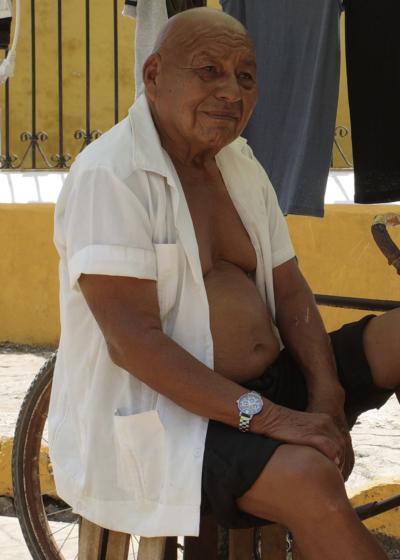
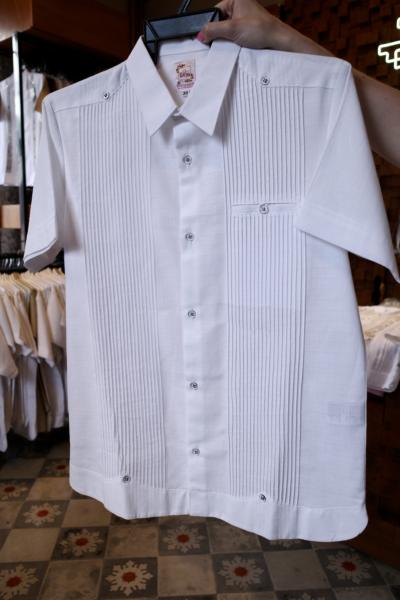
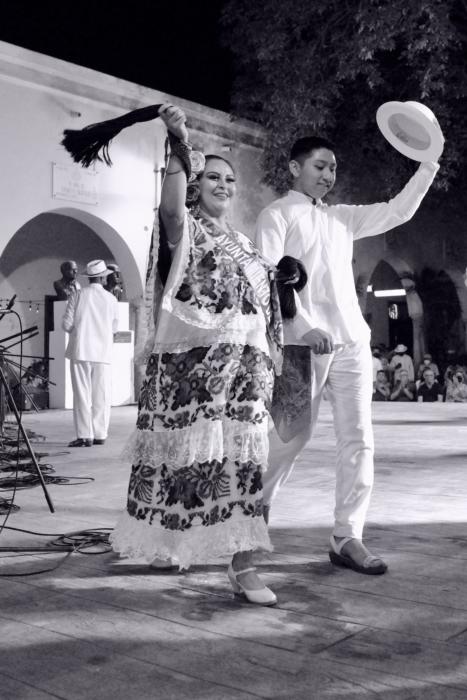
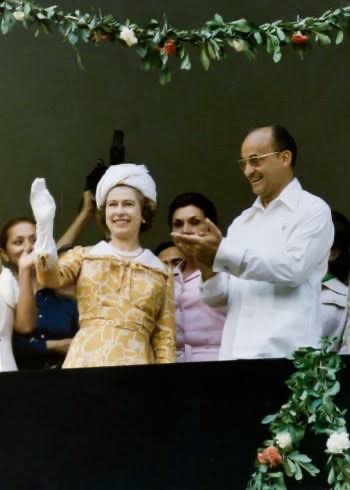
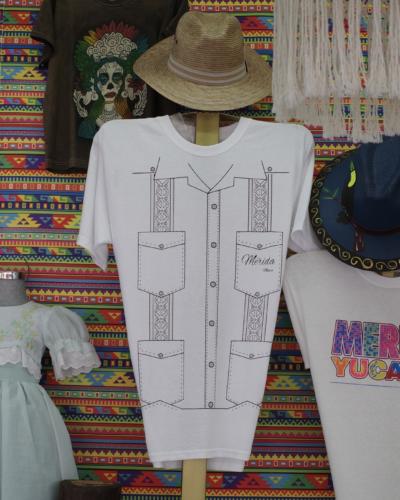
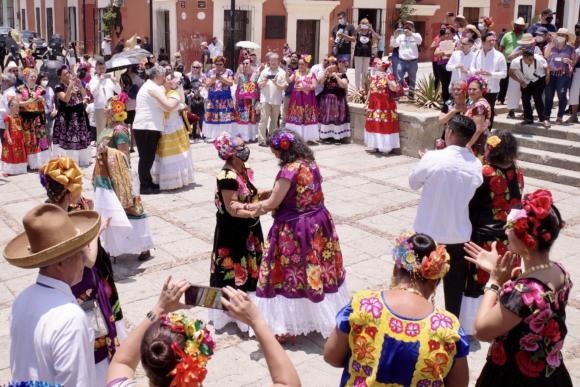
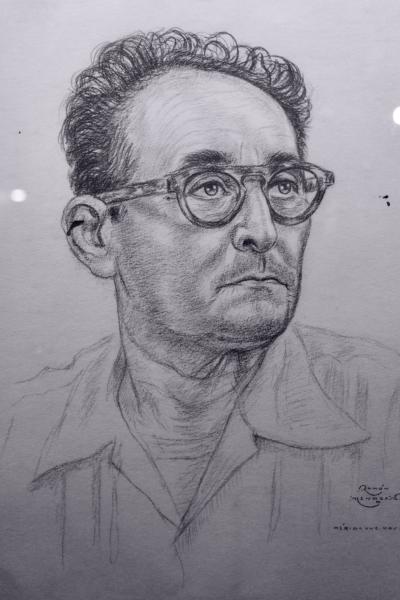
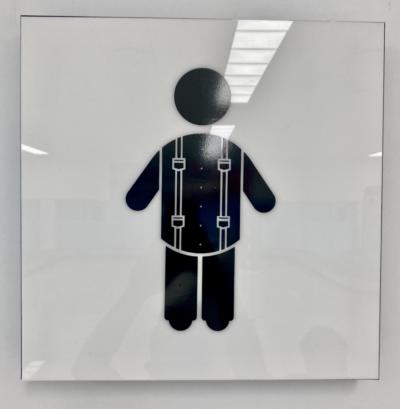
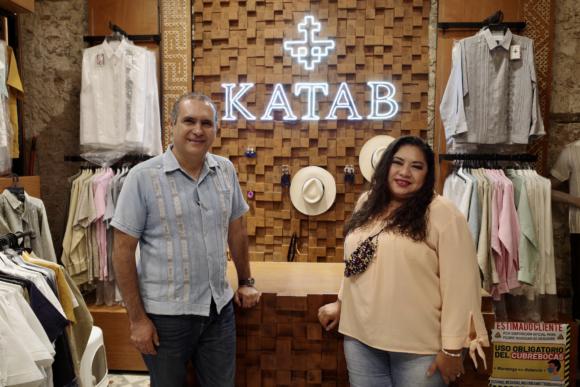
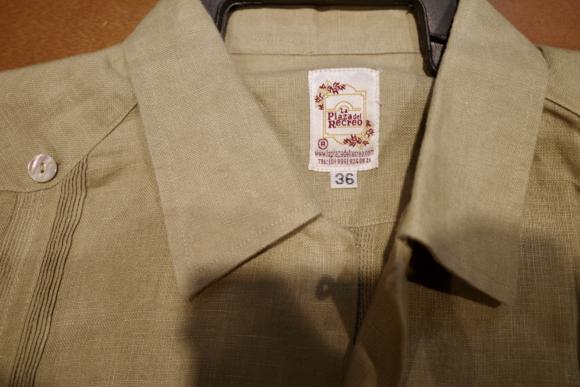
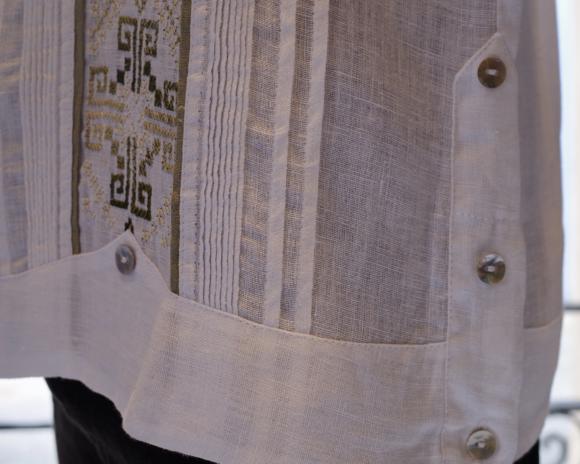
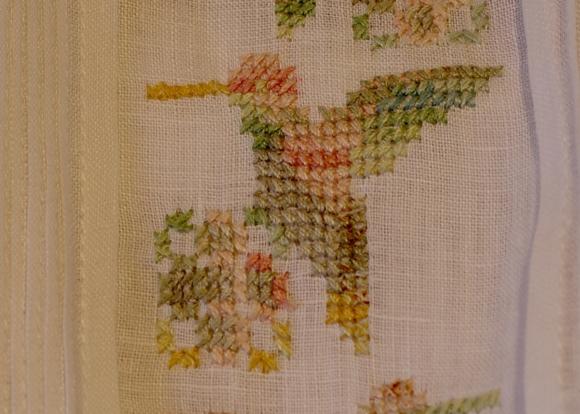
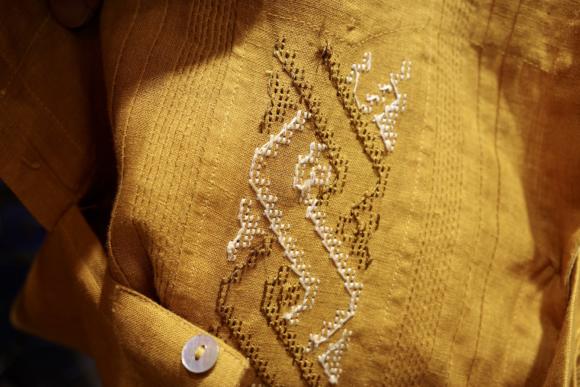
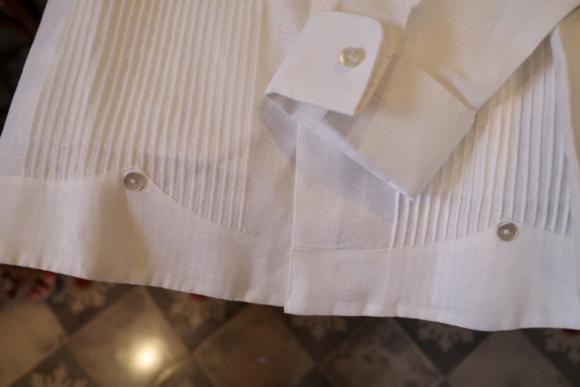


























Manish mon vieux, if the good drink is going to precede the museum visit, in that case i’d personally opt for a fortifying flat white.
Brilliant, and stunningly unique post…. Mexico!
The stereotype mens apparel, when I think of Mexico is desperados in huge wide sombreros sipping tequila under a cactus tree with their horses standing by or the mariachis in their distinct outfits. Oh how naive and wrong I am.
Great to see such an original and unique post here.
Could this be the start of a new topic… unique dress styles from other countries of the world… Peru, Argentina, India, Africa and many others…. the mind boggles Simon!!
Brilliant!!
This was great, interseting and well written and made me instantly want a guayabera.
I can’t help but wonder however, what my wife’s reaction would be if we went to Mexico on holiday and I spent two hours discussing a shirt.
Thank you so much, Darren ?
Haha! I hear you but I learned a lot (not just about shirts), marginally improved my Spanish and made some friends.
And it was definitely a better use of time than the four hours I spent on holiday watching Arsenal lose two football matches in a row!
Fantastic post Simon! I am originally from the Caribbean and have been a reader of PS for years. Love that you took an interest in such a historical and traditional Latam/Caribbean garment. The joke goes that along with a perfectly tailored guayabera one must use a litre of spray starch when pressing it in order for it to look impeccable like a component of a military uniform 🙂
This is an outstanding piece. I enjoyed every moment of reading.
Brilliant, curious and quite open-minded.
I am inspired to try my father-in-law’s cotton-linen guayabera.
Thank you Manish. This article was a pleasure to read.
Superb! Is anyone else having issues with the Katab website? When I saw the embroidered shirt I immediately wanted to secure one for myself, but it appears there’s an issue. Perhaps the author can give a quick message to the owners and let them know the demand is out there!
Yes, it doesn’t work for me Michael. I’ll see if Manish can drop them a line
Hi Michael
Sorry, one thing the owners did mention is they would be updating their website soon and I guess the process has now started!
The email address is [email protected]
Their business WhatsApp is +52 999 267 8345 (and that’s probably the best way to contact them).
Please drop a note back if you still have no joy and I can contact Maru directly.
Thanks so much,
Manish
what are the origin of lapels btw?
Nice article….but isn’t it “cultural appropriation” and therefore “bad”?
What’s cultural appropriation exactly? This is about Mexicans that make a traditional Mexican garment?
Personally I think the right term is cultural appreciation.
You need to loosen up Brother. So-called “cultural appropriation” has been going on since the Dawn of Time.
A refreshing detour from our usual, much-appreciated PS fare. So apt too, with summer just around the corner and guayaberas being an elegant complement to the traditional, blowy plain linen shirts.
I dare insist that the guayabera owes its roots to the Philippine barong tagalog. The former came into existence in Mexico and the rest of Central America through the galleon trade between Manila and Acapulco, which began in 1565. There is no record of guayaberas having existed or being worn in Mexico and Central America before the galleon trade, while barong tagalogs antedated even the arrival of the Spaniards in the Philippines in 1521. The difference in styles (pleats and pockets in guayaberas) are an evolution brought about by cultural and historical context (for instance, pockets were banned in Filipino menswear during Spanish times to prevent Filipinos from carrying and hiding knives and weapons in their pockets; the same reason that the cloth used for barong tagalogs were required to be less opaque than the counterpart cottons of guayaberas).
Thanks so much, Julian. This is an absolutely fascinating addition.
I think the fact that the plainer, banded collar shirts are also called Fillipinas lends more weight to that view as well.
Cheers,
Manish
Fascinating. Reading – and enjoying Manish’s piece, and then your historical reference, Julian. I was reminded of my first visit, to my parents, working in Manila, during the 1980’s. A T-Shirt and jeans youth, I recoiled at being handed a Barong Tagalog to wear to an evening function, and was hugely relieved to discover that, as my Father had advised; “all adult males will be wearing one”. They could be richly embroidered/textured, or quite plain. In various cream/white hues and with sweeping cuffs, a Barong was formal enough for pretty well all occasions (Ferdinand Marcos always wore one), extremely practical, comfortable in the heat and humidity and I never felt out of place in it. I did bring some back to the UK, but even at the height of Summer … I would have felt very conspicuous.
I understood they were traditionally made from Banana leaves, but cotton had superseded these.
Burgos in Madrid make some nice ones – either RTW, MTM or bespoke.
Thanks so much, Philippe.
Can I ask if you know if the Burgos ones have pleated fronts as it doesn’t look like it from the photos? Not that it matters, this is their take on the shirt, I’m just curious!
Cheers,
Manish
What a tremendous article! I thoroughly enjoyed learning about a garment. But what will really stay with me are your incredible insights into the people of Mexico. Thank you!
Buenos días, Señora Puri. An article by me was published last week by @eleganzadelgusto
https://www.eleganzadelgusto.com/guayabera-orgoglio-anticolonialista/
As you may know, the guayabera has always been known by most to be of Cuban origin while the decorated shirts are definitely Mexican (yucatecas).
Regards.
I found the article very well written, however the comment by Higgins is preposterous. I am a mix of Mexican Indian and Spanish, what’s called Mestizo. I have a penchant for wearing Gieves & Hawkes and Canali Suits, In Higgins opinion should I wear a mariachi outfit or a huge sombrero and sandals? Seriously. J.C.
You can come to Miami and go to numerous stores where they sell Guayabers. I just picked some up for my grandchildren to wear for a wedding. All linen or if you’d prefer a combination of linen and cotton. They are stunning.
Great article, Manish. Any tips for going about ordering from Guayabera Jacks? I’m not looking for anything complicated, a basic shirtsleeve version in light blue linen, but not idea how to communicate with them. Thanks
Thanks for this story. Guayaberas have become an essential part of my summer wardrobe here in Rome, with the temperature now almost daily a humid 37. If you need to walk around outside much in that heat, a tailored jacket is really impossible. Yet I don’t like carrying a bag, so I appreciate all the pockets on a guayabera for phone, sunglasses, cigars, even the surgical mask which is still required on public transportation here.
I have yet to find a source for traditionally made guayaberas from Latin America here. The links to both shops in your story seem to be not functioning–I imagine it’s hard for a small family outfit to deal with web development, fulfillment etc. when they already have a thriving local business.
A company called Cohibas makes pretty nice linen versions here in Italy–expensive naturally, and the pleats are appliqué. And you can always buy the ones sold by J. Edwards which ship everywhere–but they’re made in Asia (not the Philippines) and also use appliqué pleats.
Any information of authentic guayaberas that are available in Europe would be appreciated.
Thanks Max, noted and I’ll shout if I find somewhere good.
Manish, just a note to say I’m at a Mexican colleagues wedding this weekend – and ordered a Katab Guayabera for the occasion.
Superb quality and fit, I have to say. The material and embroidery is beautiful. Perfect summer heatwave formal wear.
Thanks for this article – was invaluable and pointed me towards an artisan I’d never have found. Typical PS.
Hi Paul
Thank you so much for letting me know. I can’t tell you how happy I am to hear this!
I hope the wedding is fun, and I’m sure we’d all love to see a photo of your outfit please!
Best wishes,
Manish
Apologies, I missed this notification! Here you go.